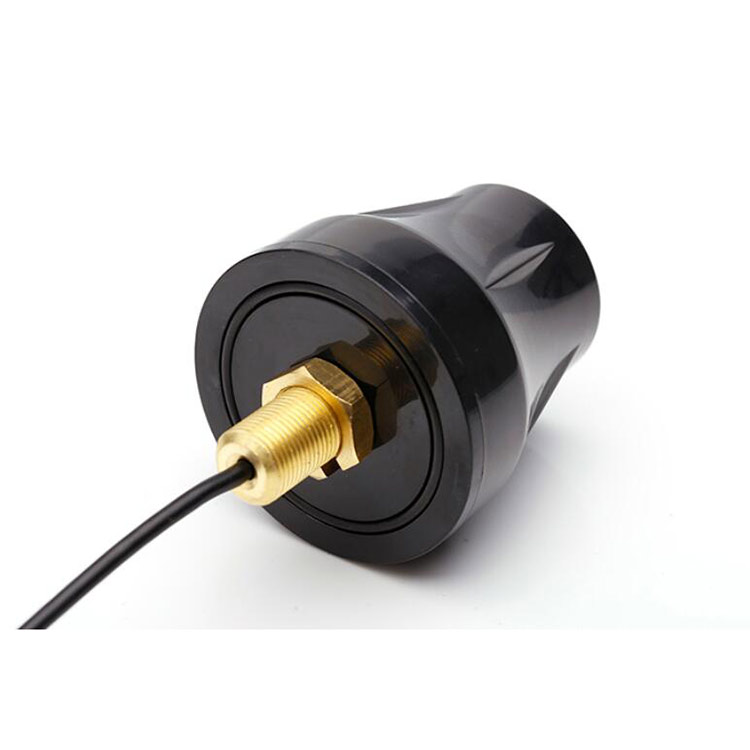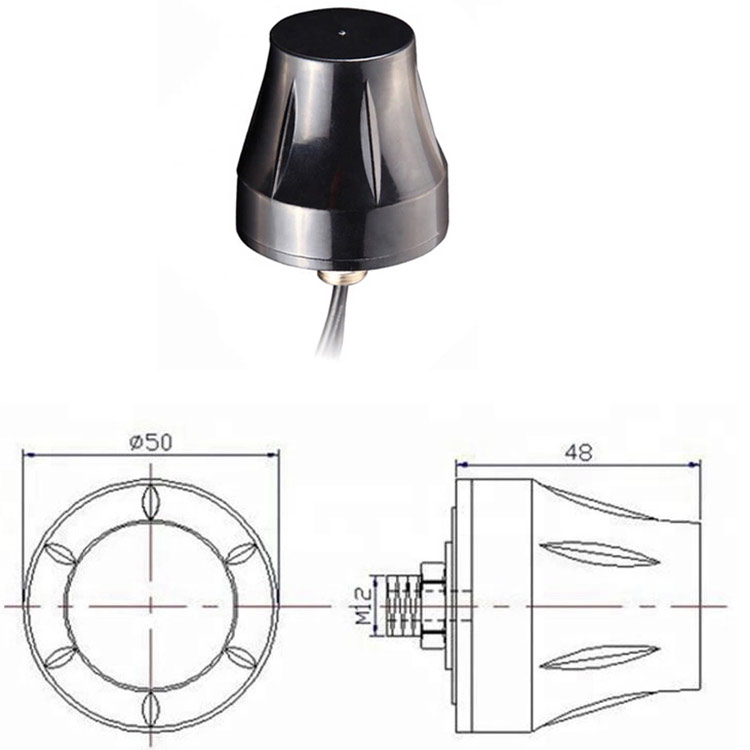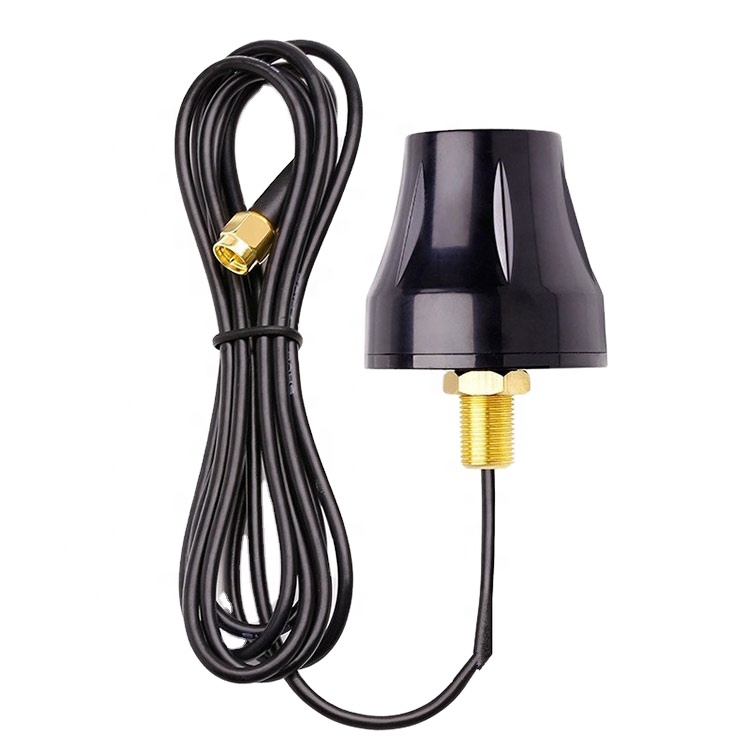The screw mount waterproof GPS antenna is designed to excel in a variety of applications where durability, waterproofing, and reliable performance are essential. Let’s explore some of the key use cases:
Marine Vessels: Boats, yachts, and commercial ships rely on GPS for navigation, route planning, and safety. The screw mount design ensures that the antenna can be securely fastened to the vessel’s deck or mast, withstanding the constant motion and vibrations of the water. The IP65 waterproof rating protects against rain, splashes, and salt spray, while RHCP polarization minimizes interference from reflections off the water’s surface. Dual-frequency support (1575.42 MHz and 1551.10 MHz) ensures that the antenna can receive signals from both GPS and BeiDou satellites, which is particularly valuable in coastal regions where BeiDou coverage is strong. Whether navigating through busy shipping lanes or remote coastal waters, the antenna provides the accurate positioning data needed to avoid collisions and reach destinations safely.
Construction Equipment: Construction machinery such as excavators, bulldozers, and cranes require GPS for fleet management, site mapping, and precision operations. The screw mount waterproof GPS antenna can be mounted on the roof or frame of these vehicles, securely fastened to withstand the vibrations and shocks of heavy machinery. The IP65 rating protects against rain, dust, and debris, ensuring reliable performance even in muddy or dusty construction sites. The low noise figure (≤ 1.5 dB) is critical in urban construction environments, where tall buildings can block or weaken satellite signals; the antenna’s ability to detect weak signals ensures that equipment remains trackable and operable. Additionally, the 50-ohm impedance ensures compatibility with the fleet management systems used by construction companies, simplifying integration and data collection.
Outdoor Surveillance Systems: Security cameras and monitoring equipment deployed in outdoor locations—such as parks, parking lots, and remote facilities—often require GPS for time synchronization and location tagging of footage. The screw mount antenna can be mounted alongside cameras on poles or buildings, providing accurate time and location data. The IP65 waterproof rating ensures that the antenna remains functional in rain, snow, or extreme temperatures, while the dust protection prevents clogging from dirt or debris. RHCP polarization helps minimize interference from reflections off buildings or other surfaces, ensuring consistent signal reception for reliable time synchronization. This is essential for coordinating footage from multiple cameras, as accurate time stamps allow security personnel to reconstruct events in chronological order.
Agricultural Machinery: Tractors, harvesters, and other agricultural equipment use GPS for precision farming, including guided planting, fertilization, and harvesting. The screw mount waterproof GPS antenna is well-suited for these applications, as it can be securely mounted on the equipment to withstand the vibrations of fieldwork. The IP65 rating protects against rain, mud, and dust, ensuring reliable performance throughout the farming season. Dual-frequency support allows the antenna to leverage both GPS and BeiDou satellites, which is valuable in rural areas where satellite coverage may vary. The antenna’s ability to provide accurate positioning data enables farmers to optimize crop yields, reduce input costs, and minimize environmental impact by ensuring that resources are applied precisely where needed.
Renewable Energy Systems: Wind turbines and solar farms require GPS for monitoring, maintenance, and synchronization of operations. The screw mount waterproof GPS antenna can be mounted on turbine nacelles or solar panel arrays, providing accurate location and time data. The IP65 rating protects against rain, wind-driven debris, and extreme temperatures, ensuring reliable performance in remote and exposed locations. The antenna’s low noise figure is important in these environments, where the large structures of wind turbines or solar panels can block satellite signals; the ability to detect weak signals ensures that monitoring systems remain operational. Additionally, the secure screw mount design withstands the strong winds and vibrations associated with wind turbines, preventing dislodgment and maintaining consistent performance.
Installation and Maintenance Best Practices
Proper installation and maintenance are critical to ensuring the long-term performance of the screw mount waterproof GPS antenna. Here are some key best practices to follow:
Surface Preparation: Before installing the antenna, the mounting surface should be clean, flat, and free from debris. For metal surfaces, it may be necessary to remove rust or paint to ensure a secure fit. In marine applications, the surface should be treated with anti-corrosive paint to prevent rust around the mounting screws. For wooden or plastic surfaces, pre-drilling pilot holes can help prevent cracking when inserting screws.
Sealing and Waterproofing: While the antenna itself has an IP65 rating, the mounting interface should be sealed to prevent water from seeping into the surface or causing damage. Applying a waterproof sealant—such as silicone caulk—around the base of the antenna and the screw holes can enhance the waterproofing, particularly in marine or high-moisture environments. This extra layer of protection helps maintain the integrity of the mounting surface and prevents corrosion.
Orientation: The antenna should be mounted in a location with a clear view of the sky to maximize satellite signal reception. Avoid mounting it near large metal objects, such as chimneys, antennas, or machinery, which can block or reflect signals. In marine applications, the antenna should be mounted as high as possible on the vessel (e.g., on the mast) to minimize signal obstruction by the hull or other equipment.
Cable Routing: The coaxial cable connecting the antenna to the receiver should be routed carefully to avoid damage. The cable should be secured using clips or ties to prevent movement, which can cause wear and tear over time. In outdoor applications, the cable should be protected from UV radiation using UV-resistant sleeves or conduit, as prolonged exposure to sunlight can degrade the cable’s insulation. Additionally, the cable should be routed away from sources of electromagnetic interference (EMI), such as power lines or motors, which can disrupt GPS signals.
Regular Inspection and Maintenance: Periodic inspection of the antenna and mounting hardware is essential to ensure continued performance. Check for signs of damage to the housing, such as cracks or dents, which could compromise waterproofing. Inspect the mounting screws to ensure they remain tight, and re-tighten them if necessary. In marine environments, clean the antenna periodically to remove salt deposits, which can corrode the housing and affect signal reception. Replace any damaged seals or gaskets to maintain the IP65 rating.
Testing: After installation, test the antenna to verify that it is receiving signals correctly. Use a GPS receiver or monitoring system to check signal strength, accuracy, and continuity. In challenging environments, such as urban canyons or dense foliage, perform additional tests to ensure that the antenna can maintain a reliable connection to satellites. If signal issues are detected, reposition the antenna or adjust the cable routing to minimize interference.




































































 Language
Language
 En
En Cn
Cn Korean
Korean

 Home >
Home > 








 18665803017 (Macro)
18665803017 (Macro)













